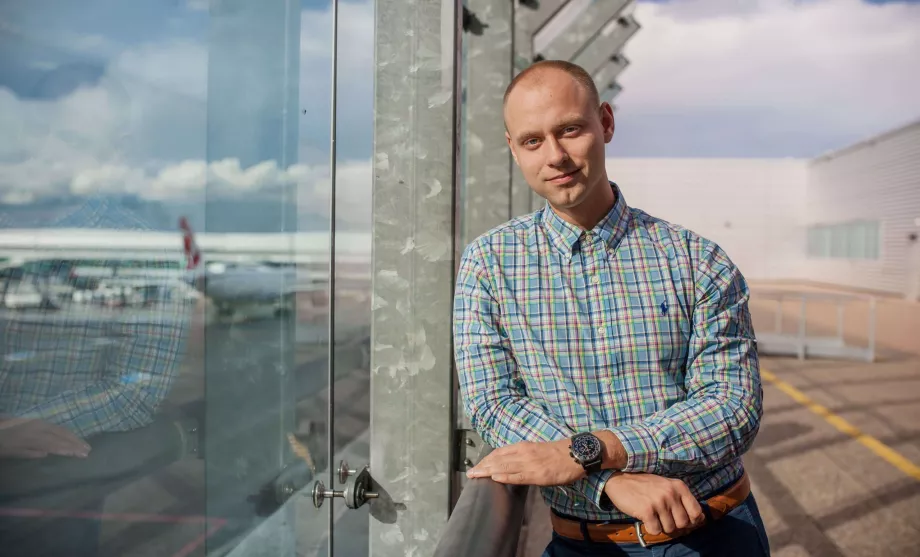What to see in Budapest
25 must see places
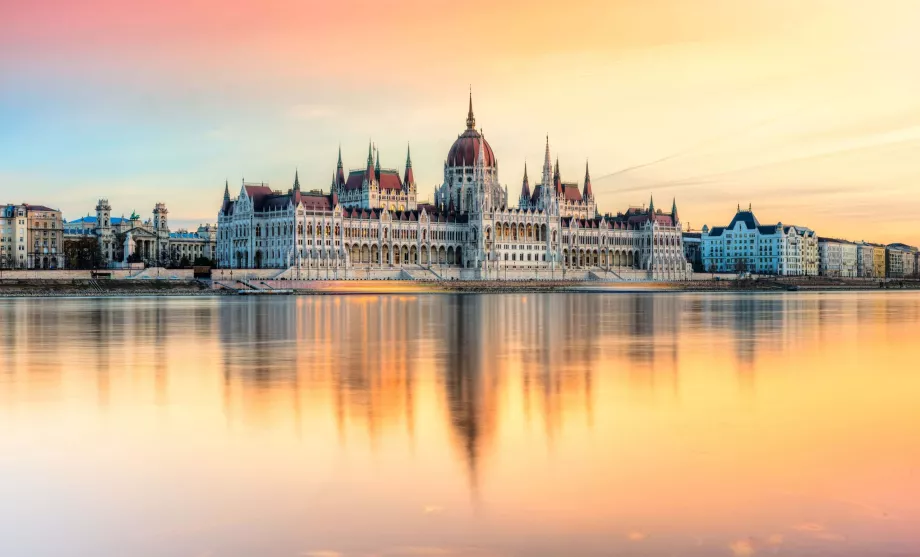
Historic building, Parliament
The Hungarian Parliament building is definitely one of the most beautiful and impressive parliament buildings in the world and is a clear landmark of Budapest and a symbol of Hungary. [btn "Book the cheapest accommodation in Budapest" https://www.booking.com/city/hu/budapest.cs.html?aid=2380460;label=p-budapest-parlament] An impressive building on the banks of the Danube The Parliament Building, called Országház in Hungarian, is a monumental…
Read more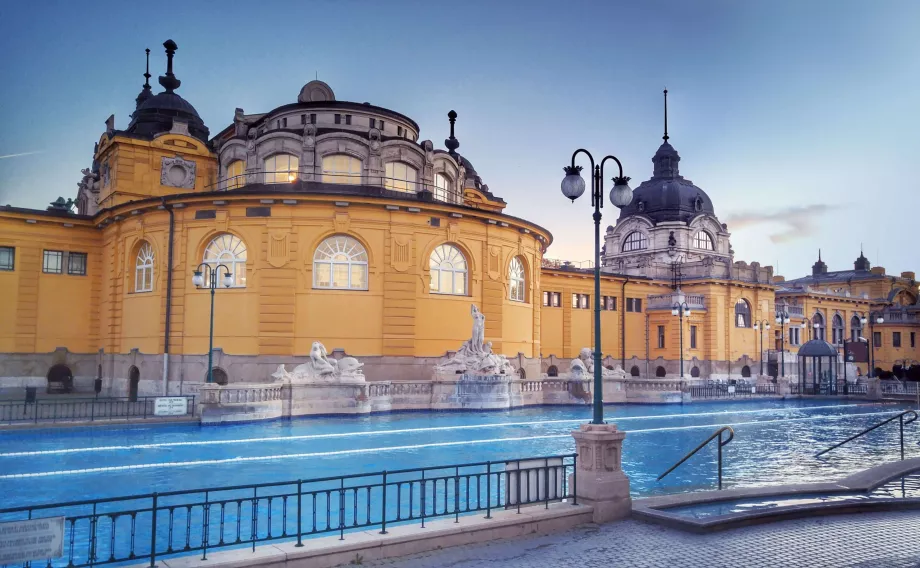
Spa
This spa is undoubtedly the most famous in Budapest and the largest spa in Europe. [btn "Prices and availability of accommodation" https://www.booking.com/city/hu/budapest.cs.html?aid=2380460;label=p-budapest-szechenyi-lazne] Originally, the site was occupied by the so-called Artesian Baths from 1891, but these were rebuilt in 1909-1913 into their current neo-Baroque form. The building is designed in a mirror design, with two identical parts,…
Read more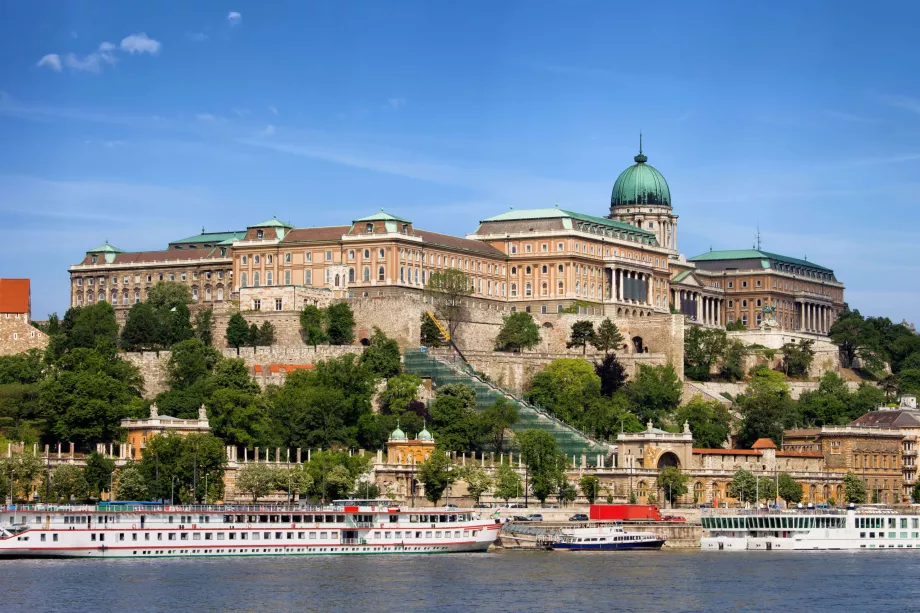
Castle
The most prominent landmark of the former city of Buda, now part of Budapest, is Buda Castle, sometimes referred to as the Royal Castle. [btn "The 10 best hotels in Budapest" https://www.booking.com/city/hu/budapest.cs.html?aid=2380460;label=p-budapest-budinsky-hrad] The Buda Castle, called Budai Vár in Hungarian, is the central structure of Budapest's Castle Hill and, like Prague Castle, is actually an entire complex of palaces and a medieval…
Read more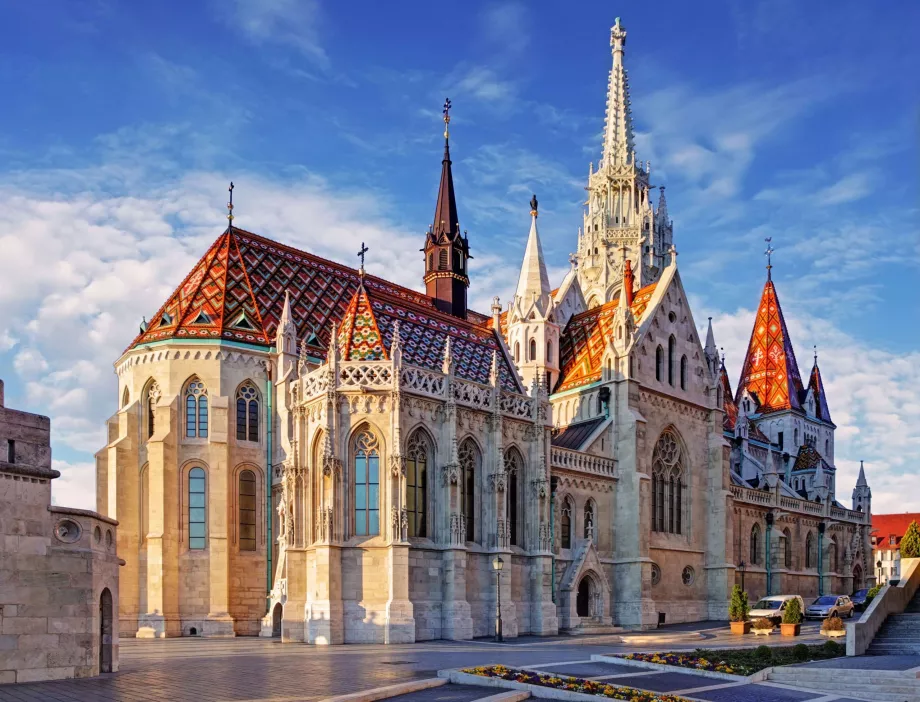
Temple
The Church of the Assumption is one of the most important monuments of Budapest and a symbol of the whole of Hungary. Among the locals, the church is known as Mátyás Temple , although this name did not appear until the 19th century. The temple is located in the old Buda area near Buda Castle. [btn "The 10 cheapest hotels in Budapest" https://www.booking.com/city/hu/budapest.cs.html?aid=2380460;label=p-budapest-matyasuv-chram] History and…
Read more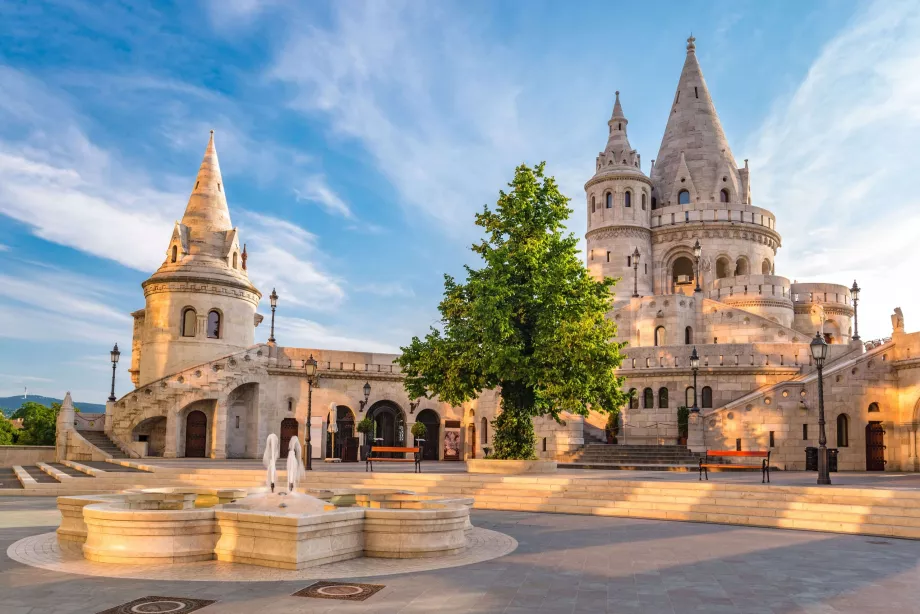
Lookout, Historic building
Half of the visitors admire the Fisherman's Bastion (Halászbástya) and the other half hate it. It is built in a combination of Neo-Romanesque and Neo-Gothic style with a total of 7 towers connected by walkways. [btn "Book a hotel in the centre of Budapest" https://www.booking.com/city/hu/budapest.cs.html?aid=2380460;label=p-budapest-rybarska-basta] For many, it's just an over-decorated kitsch building that, although it looks very old, was…
Read more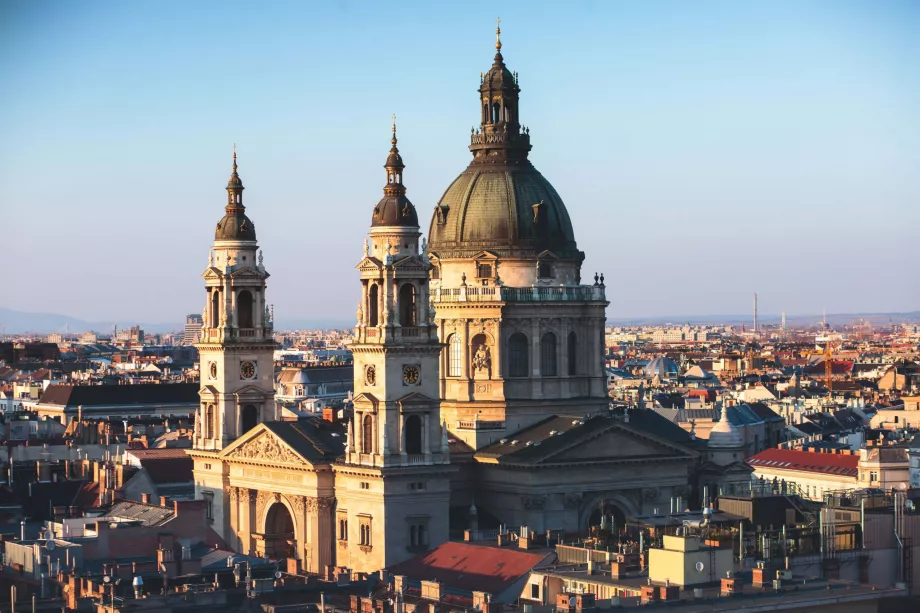
Basilica
The Basilica is located in the very heart of the city and is one of the most important monuments in the whole of Hungary, as it houses the nation's most revered relics of the mummified hand of King Saint Stephen. But the interior itself is also beautiful, with its giant organ, which is decorated with paintings and statues. [btn "Book a hotel in central Budapest" https://www.booking.com/city/hu/budapest.cs.html?aid=2380460;label=p-budapest…
Read more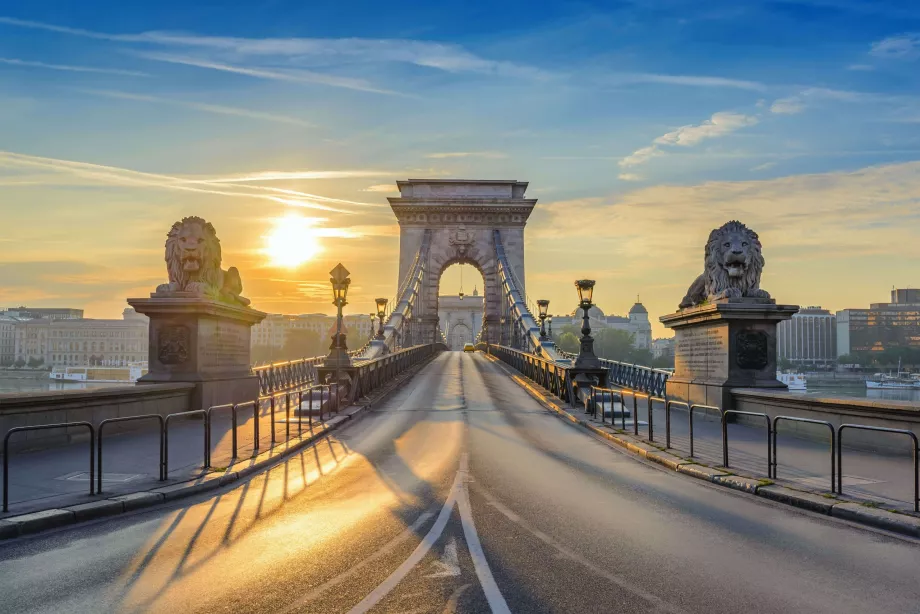
Bridge
The Chain Bridge (Széchenyi Lánchíd), built in 1849, was the first connection between the then independent cities of Buda and Pest (the cities were merged in 1872). It was the initiative of Count István Széchenyi, who brought a steam engine to Hungary and founded the Hungarian Academy of Sciences, and was designed by British engineers William and Adam Clark. [btn "Hotels overlooking the Danube" https://www.booking.com/city/hu/budapest.cs.html…
Read more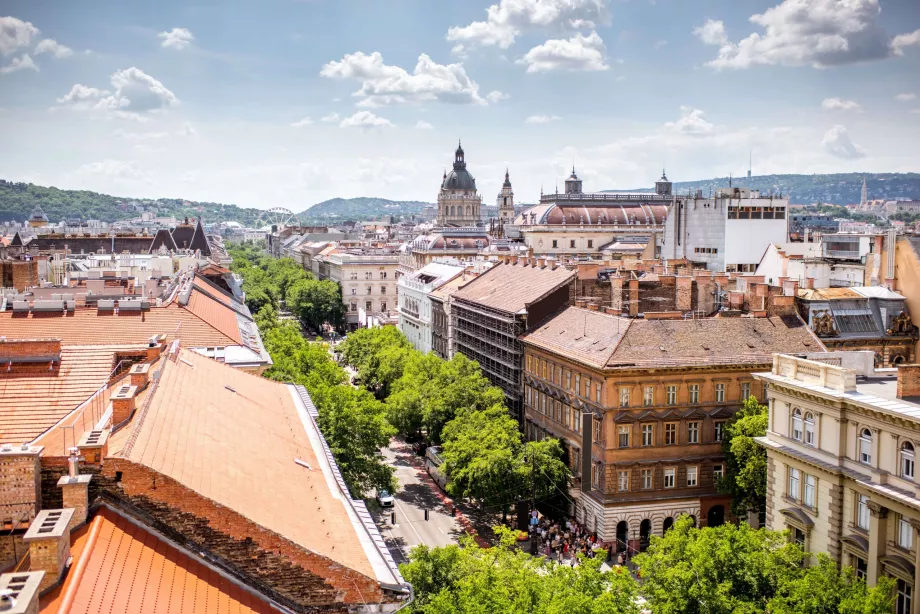
Street
Andrássy Avenue (Andrássy út in Hungarian) is certainly Budapest's most famous and most prominent street, where you will find many luxury boutiques, countless restaurants and cafes, as well as a number of galleries and museums, palaces and state buildings. The famous M1 Jubilee metro line, colloquially known as Földalatti, runs under the entire length of Andrássy Avenue. This 2.5-kilometre-long avenue runs from St. Stephen's Basilica to Heroes'…
Read more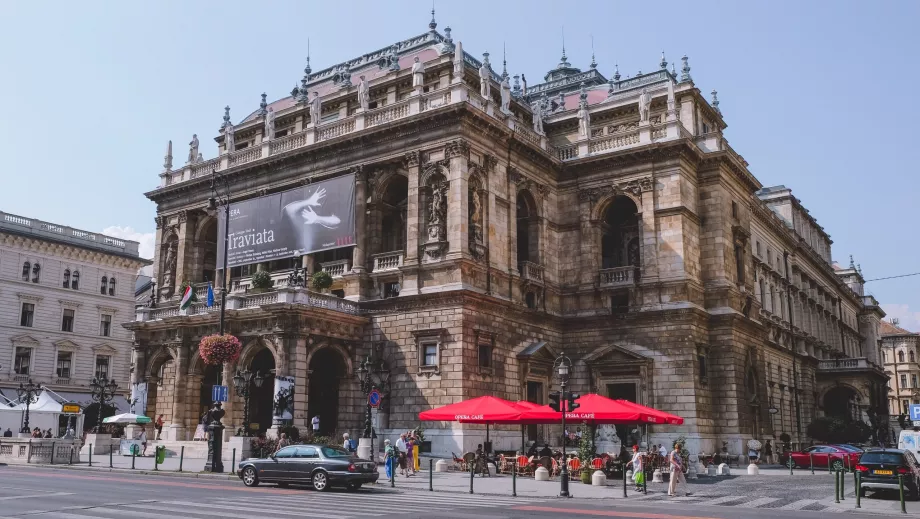
Opera
In the historic centre of Pest, right on Andrássy Avenue, the magnificent Neo-Renaissance building of the Hungarian State Opera House is one of the country's symbols. In addition to the city of Budapest, the construction was also significantly financed by Emperor Franz Joseph I to support the cultural development of the Hungarian part of the monarchy. The opera house was inaugurated in 1884. [btn "Find hotel prices in central Budapest" https:/…
Read more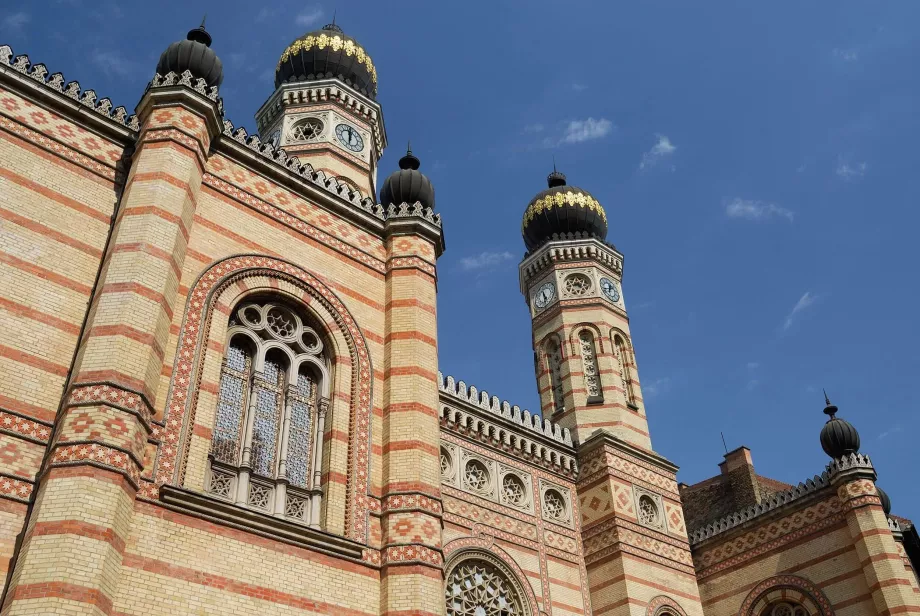
Synagogue
The largest Jewish temple in Europe, built in the Moorish style with a typical copper dome, is one of the most striking and important buildings in Budapest. It can accommodate 3,000 worshippers, making it the second largest synagogue in the world (after the synagogue in New York). This conservative (not Orthodox) synagogue was built in 1859 to a design by Viennese architect Ludwig Förster and has elements of both Romanesque and Moorish…
Read more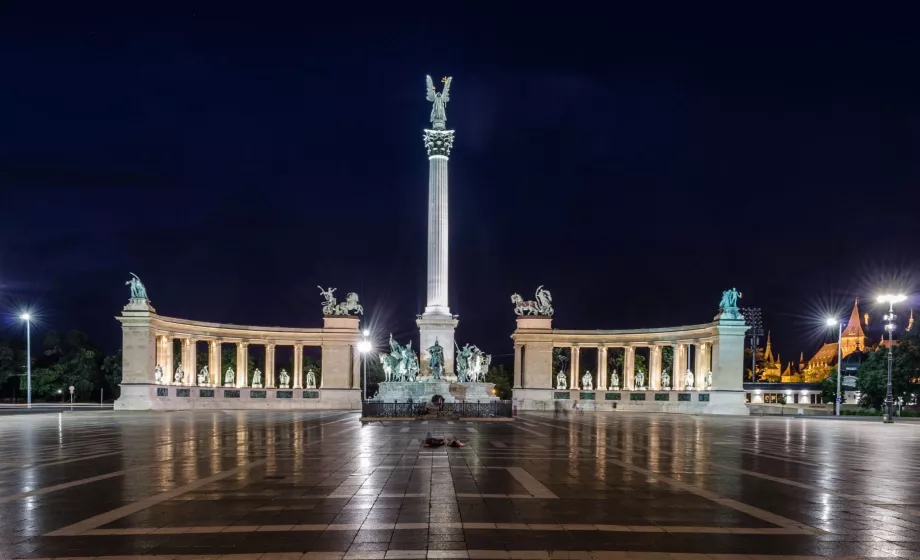
Square
This square is located between the Városliget Municipal Gardens and Andrássy Avenue, and the main landmark of the square, the Millennium Monument, is facing it. In Hungarian, the square is called Hősök tere. [btn "The cheapest accommodation in Budapest" https://www.booking.com/city/hu/budapest.cs.html?aid=2380460;label=p-budapest-namesti-hrdinu] The Millennium Monument and a bit of history The central landmark of the square is the Millennium…
Read more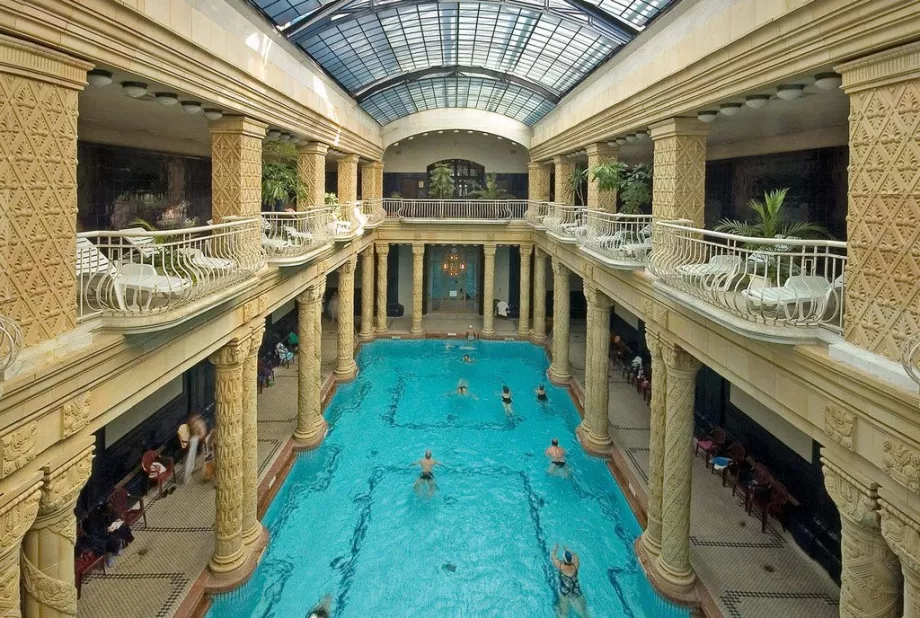
Spa
The Gellért Spa is closed for renovation from October 2025 until 2028. The spa is the second most famous in Budapest after Széchenyi's and operates as part of the luxury hotel of the same name. Built between 1912 and 1918, visitors can enjoy not only the thirteen thermal springs but also the architecture of the building with its columns and stained glass windows in Art Nouveau style. [btn "Prices and availability of hotels in Budapest" https:/…
Read more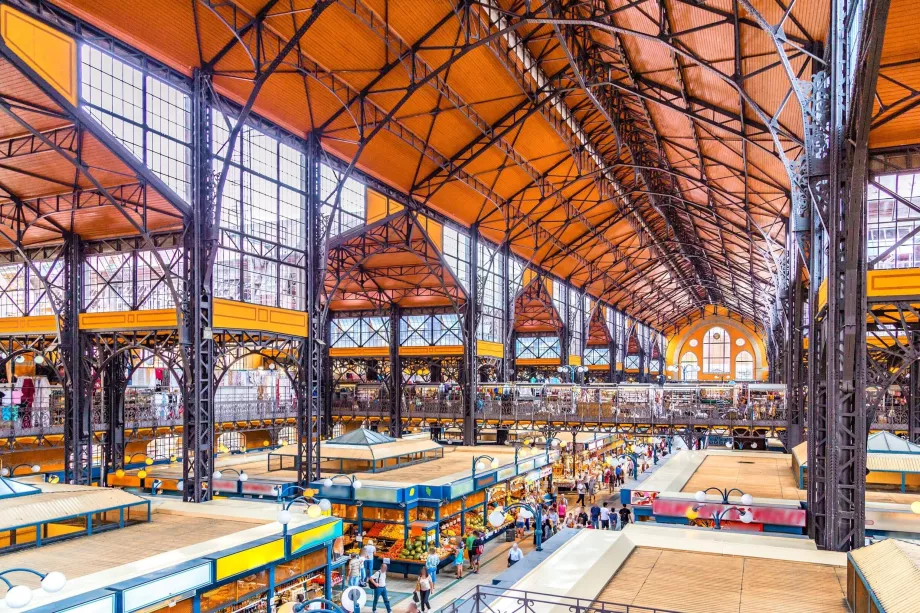
Market
The market (Nagyvásárcsarnok), housed in a building from 1896, is only one of many of its kind in Budapest, but it is the most interesting for tourists in terms of size, architecture and location. The building has two floors above ground and one underground. The market is popular with tourists and locals alike, who buy vegetables, fruit, fresh meat and fish, dairy products and spices. Tourists mostly buy small souvenirs such as dried peppers,…
Read more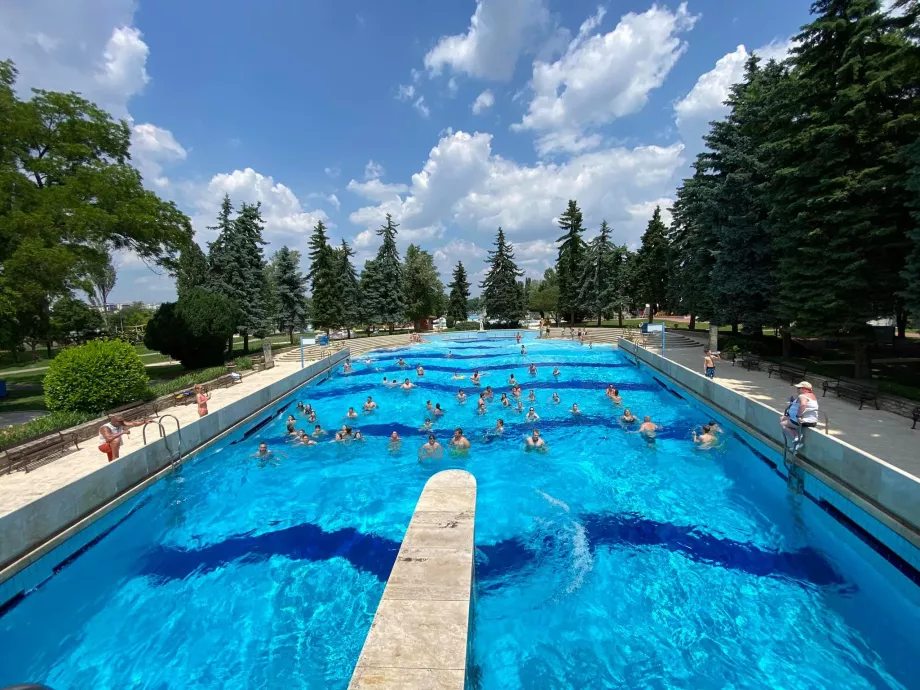
Island, Spa
Margit-sziget, as Margaret Island is known in Hungarian, is a popular place to relax on nice days, where you can visit a large park, a summer theatre and cinema, a swimming pool, a Japanese garden or the Palatinus thermal baths. [btn "Cheapest accommodation in Budapest (Booking.com)" https://www.booking.com/city/hu/budapest.cs.html?aid=2380460;label=p-budapest-marketin-ostrov] Palatinus Thermal Baths. A popular summer destination for…
Read more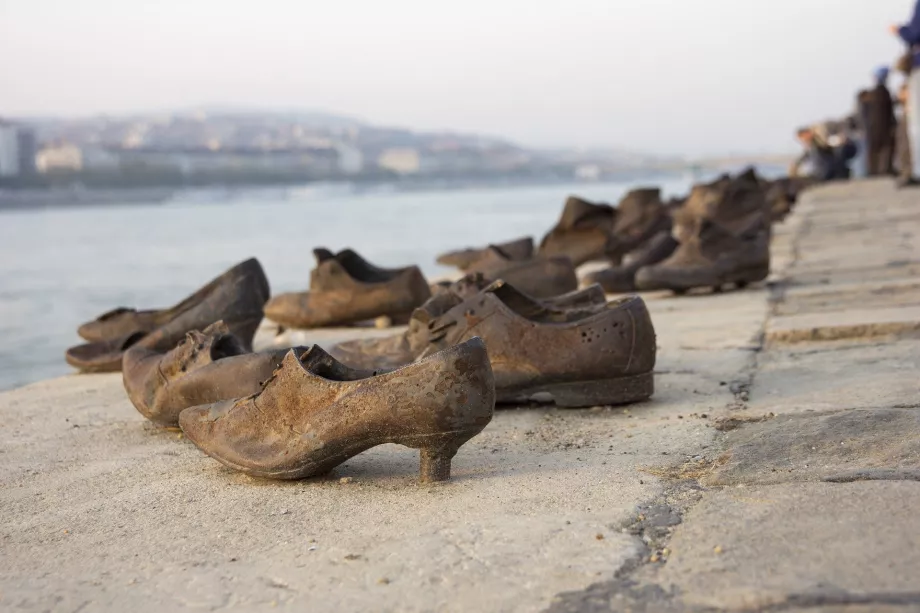
Statue
The memorial called the Shoes on the banks of the Danube is an interesting and powerful reminder of the rampage of the fascist Hungarian Arrow Cross Party during the Second World War. [btn "The 10 best hotels in Budapest" https://www.booking.com/city/hu/budapest.cs.html?aid=2380460;label=p-budapest-boty-dunaj] It was this militant Nazi party that executed up to 3,500 Hungarian Jews from the Budapest ghetto on the banks of the Danube in late…
Read more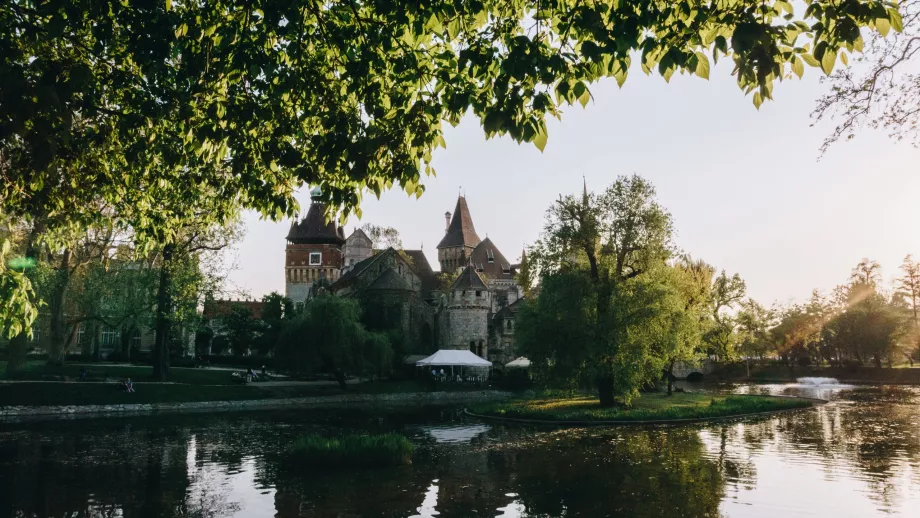
Castle
In the popular Városliget Park near Heroes' Square and Szćhenyi Spa, the small Vajdahunyad Castle on the shore of an artificial pond attracts tourists and locals alike. It is a much smaller replica of the famous Romanian castle Corvín (Hunyad), built in 1896 originally as a wooden backdrop for the Millennium Exhibition, which was held to commemorate 1 000 years since the settlement of the Hungarian basin. [btn "The 10 best hotels in Budapest"…
Read more
Archaeological site
The Roman city of Aquincum stood on the territory of today's Budapest at the end of the 1st century AD. Today it is the best-preserved civil Roman settlement in Hungary, with a covered museum and an open-air archaeological park. [btn "The 10 cheapest hotels in Budapest" https://www.booking.com/city/hu/budapest.cs.html?aid=2380460;label=p-budapest-aquincum] Roman Aquincum's period of greatest glory was roughly between 124 and 200 AD, when it…
Read more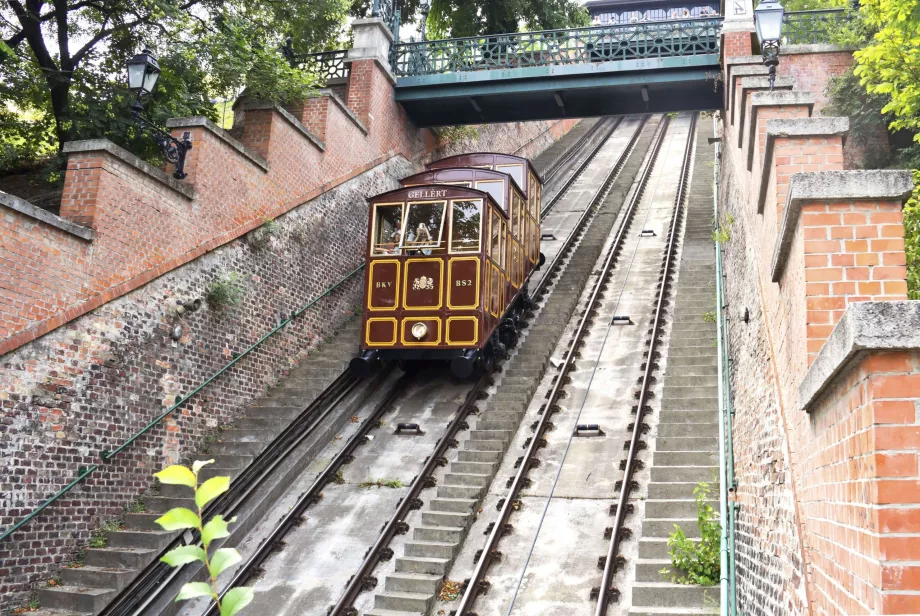
Cable car
The historic funicular railway (Budavári Sikló in Hungarian) was put into operation in 1870, but was completely destroyed by bombing during World War II, and then put back into operation in 1986. The cable car will take you to the Buda Castle complex. You will find the boarding station at the gate to the tunnel under the castle near the Chain Bridge. [btn "The 10 best hotels in Budapest" https://www.booking.com/city/hu/budapest.cs.html?aid…
Read more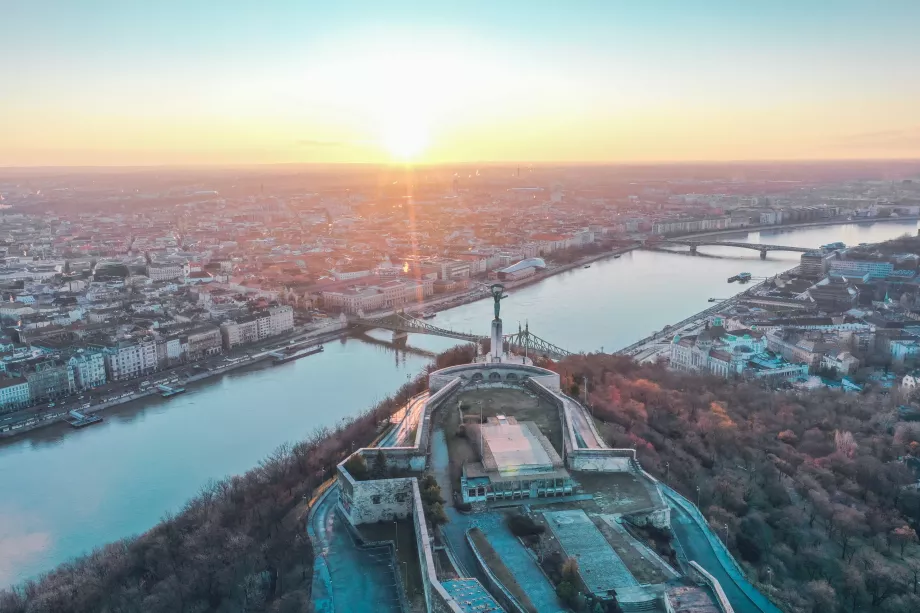
Lookout
Gellért Mountain (Hungarian: Gellért-hégy) is a forested peak rising to 235 metres on the Buda side of the city. Its appearance and significance is somewhat reminiscent of Prague's Petřín, except that there are no cable cars to the mountain and instead of a lookout tower, there is a large military citadel on the top, from whose terrace you can enjoy magnificent views of the Danube and the Pest side of the city. [btn "Book a hotel with a view"…
Read more
Spa
The Turkish thermal baths of Rudas are unique in Budapest in many ways. Originally, it was a true Turkish steam bath and later expanded to include classic swimming pools. The environment in which the Rudas baths are built, which is steeped in 450 years of history, will also impress you. [btn "The cheapest accommodation in Budapest" https://www.booking.com/city/hu/budapest.cs.html?aid=2380460;label=p-budapest-rudas-lazne] Thermal baths in an…
Read more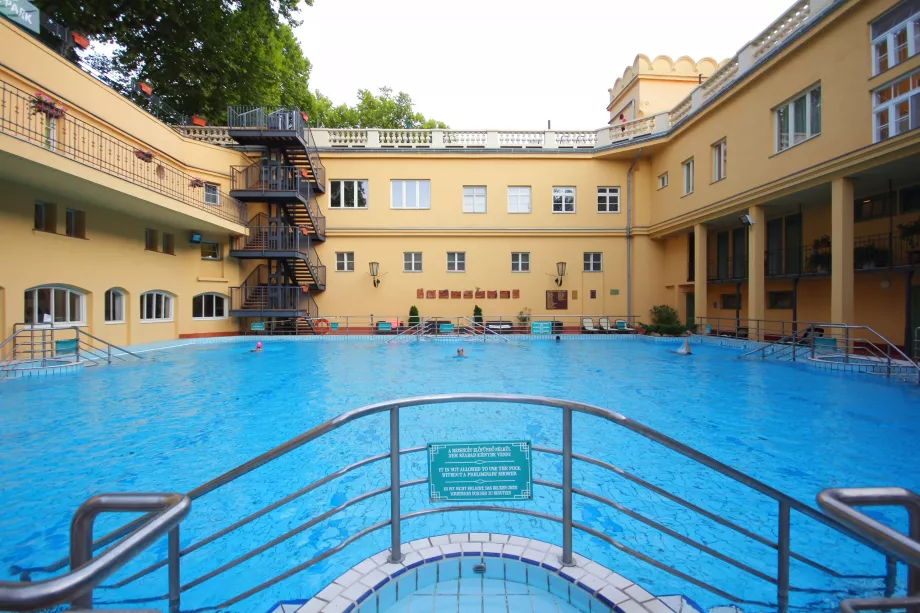
Spa
The Lukács Thermal Spa (Szent Lukács Gyógyfürdő) is one of Budapest's less visited, but quieter and more distinctive spas. Located in a nice, intimate setting in a smaller functionalist building, it's never as crowded as the better-known Széchenyi or Gellért baths. [btn "Cheapest accommodation in Budapest" https://www.booking.com/city/hu/budapest.cs.html?aid=2380460;label=p-budapest-lukacs-lazne] The Lukács Spa is open all year round and is…
Read more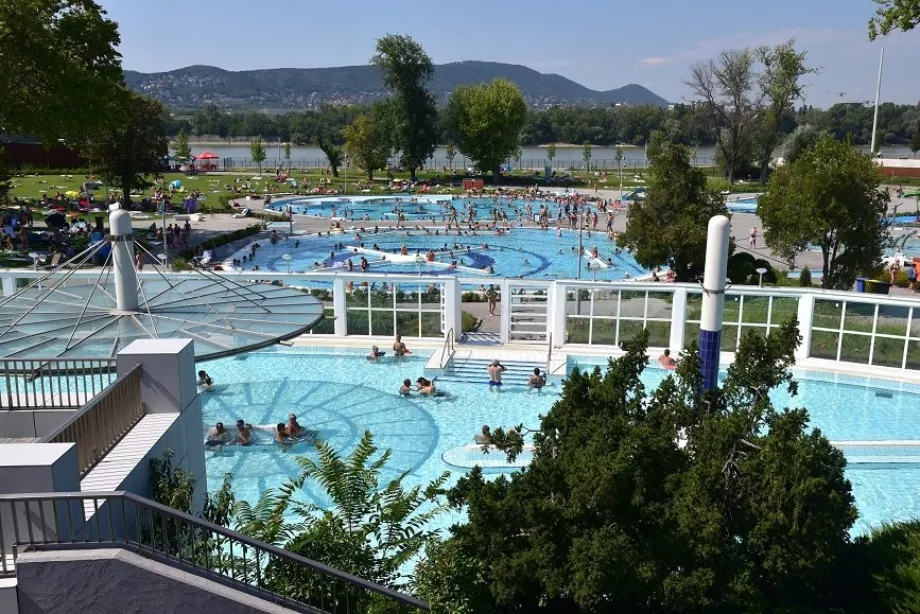
Spa
The Dagály Thermal Baths are connected to a classic swimming pool and a large grassy area with trees, which serves as a beach and relaxation zone on hot summer days. In terms of size and number of pools, Dagály ranks 1st among Budapest's spas, but if we consider only the thermal part, Dagály is one of the smallest. [btn "The cheapest accommodation in Budapest" https://www.booking.com/city/hu/budapest.cs.html?aid=2380460;label=p-budapest-dagaly…
Read more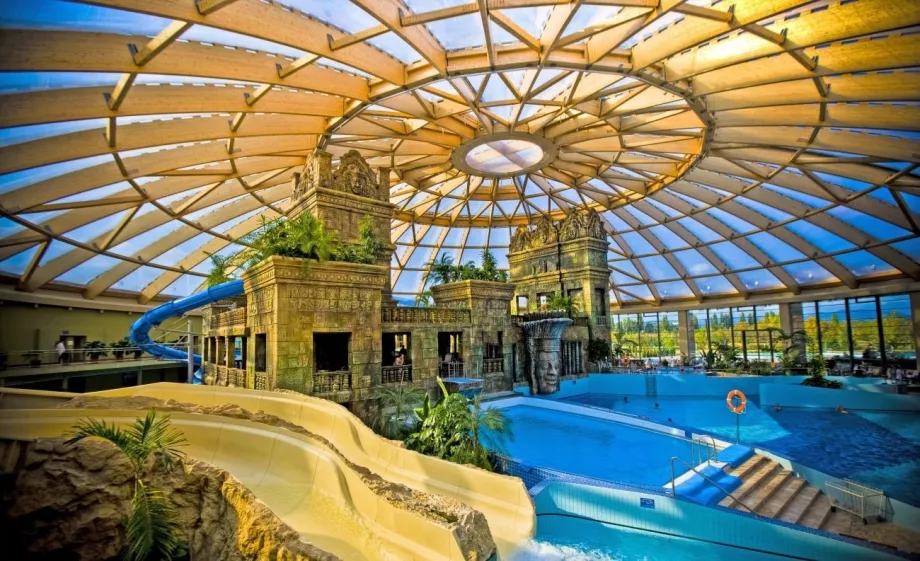
Water Park
Aquaworld Resort Budapest is one of the largest indoor water parks and artificial holiday destinations in Central Europe and is a very popular destination not only for Hungarians. Although its size is not on a par with the more famous Tropical Islands resort near Berlin, it is one of the most popular entertainment centres in Hungary and the surrounding area. Official website: aquaworldresort.hu Dozens of pools, water slides and attractions …
Read more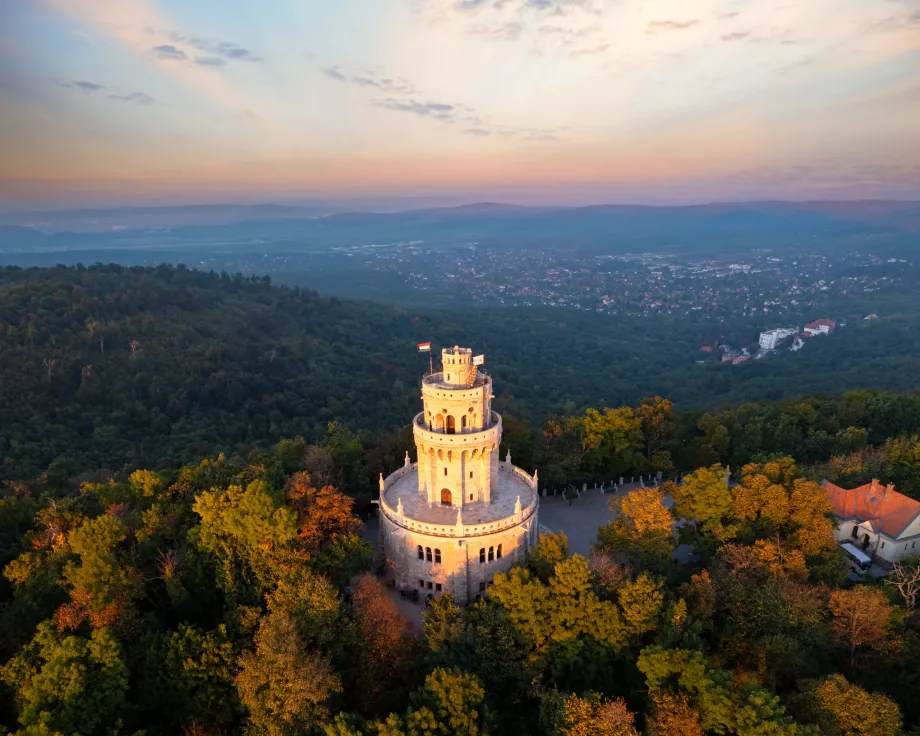
Park, Lookout Tower
Budapest is not only a city of monuments, but also of nature and a very uncharacteristically hilly landscape for Hungary. Among the most beautiful sightseeing spots are the Buda Hills and especially the János-Hegy area with its many hiking trails, viewpoints, lookout towers and an unconventional excursion railway that is practically run entirely by children. [btn "The 10 best hotels in Budapest" https://www.booking.com/city/hu/budapest.cs.html…
Read more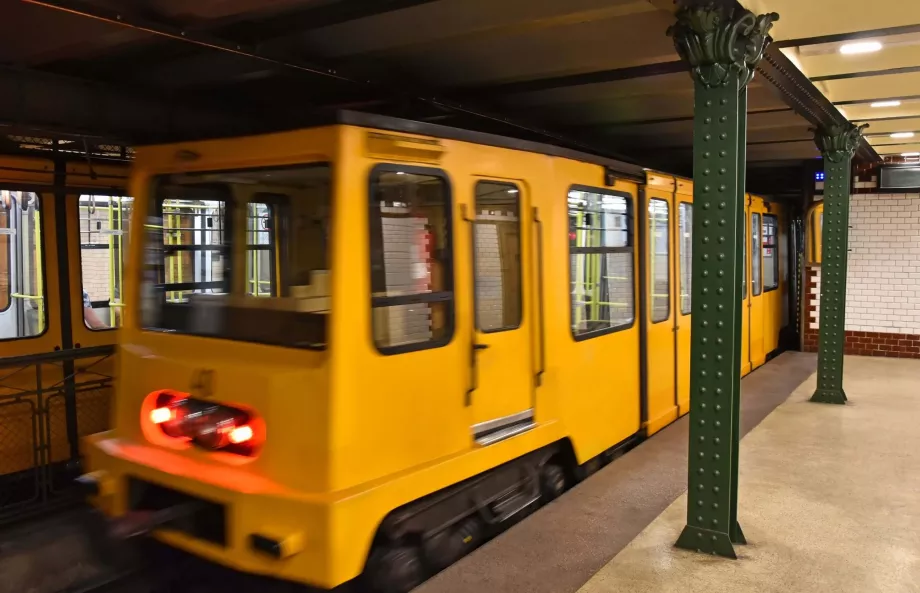
Station
This line, called Földalatti, is the second oldest in the world after the London Underground. It was put into service in 1896, almost 80 years before the first line in Prague was launched. The line was designated a UNESCO World Heritage Site in 2002, not only because of the time of its construction, but also because of its architectural design. The stations are decorated with supporting columns with decorative elements made of cast iron or…
Read more